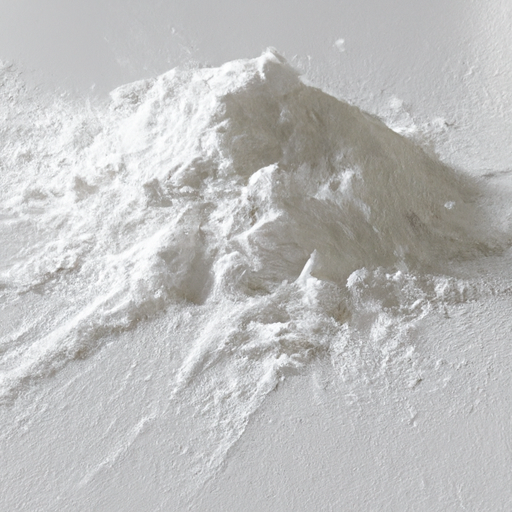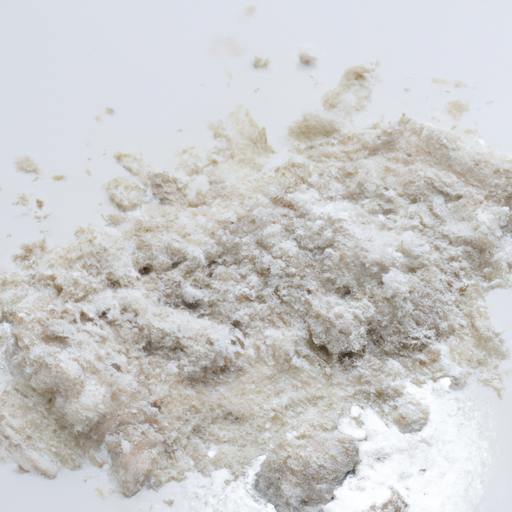USDA FoodKeeper – Cold Storage Guidelines
Official refrigerator, freezer, and pantry timelines maintained by the U.S. Department of Agriculture.
Visit USDA FoodKeeperCreatine monohydrate powder is a favorite among athletes and fitness enthusiasts for its ability to enhance performance and support muscle growth. To keep it effective, store it in a cool, dry pantry, as it boasts a shelf life of 730 days—though it’s best to use it fresh for maximum benefits!
Creatine Monohydrate Powder should not be consumed after its expiration date due to the high risk of foodborne illness. Always discard expired creatine monohydrate powder to protect your health.
"According to USDA guidelines, Creatine Monohydrate Powder should be stored in a cool, dry place away from moisture and heat sources. It is important to follow the expiration date on the packaging to ensure safety and effectiveness of the product."


Pantry
Room temperature (68°F / 20°C)
Keep in airtight container away from moisture and direct sunlight
730 days
Clumping, strong odor, change in color
Can be used as a workout supplement
Other forms of creatine supplements
Creatine Monohydrate Powder does not have a strict expiration date but may lose potency over time. While it remains safe to consume beyond the expiration date, its effectiveness may decrease. To maintain optimal quality, store the powder in a sealed container and avoid exposure to heat or humidity. Check for any changes in texture or color to assess its freshness.
To check if Creatine Monohydrate Powder has gone bad, look for any discoloration or clumping in the powder, as these are visual indicators of spoilage. Additionally, a foul or unusual smell may suggest that the powder is no longer safe for consumption. Lastly, if the texture of the powder feels moist or sticky instead of dry and powdery, it is best to discard it.
Creatine Monohydrate Powder is generally considered safe when consumed in appropriate amounts. However, excessive intake can lead to potential side effects such as stomach discomfort and dehydration. It is crucial to follow recommended dosage instructions to avoid gastrointestinal issues. To prevent contamination, always store the powder in a cool, dry place away from moisture and direct sunlight. Avoid using contaminated scoops or containers to minimize the risk of bacterial growth.
To extend the shelf life of Creatine Monohydrate Powder, store it in an airtight container and keep it in a cool, dark place. Avoid exposing the powder to moisture or extreme temperatures, as this can degrade its quality. Use a dry scoop to prevent clumping and always seal the container tightly after each use. Consider storing the powder in the refrigerator for long-term freshness.
Creatine supplementation has been widely used in the fitness industry to enhance athletic performance and muscle growth. It is a naturally occurring compound found in small amounts in foods like red meat and seafood. Historically, creatine was first discovered in 1832 and gained popularity as a sports supplement in the 1990s. Some cultures believe in the benefits of creatine for improving physical strength and endurance.
It is not recommended to mix Creatine Monohydrate Powder with hot water as high temperatures can potentially degrade the effectiveness of the supplement. It's best to mix it with room temperature or cold water for optimal results.
Once you open a container of Creatine Monohydrate Powder, it is advisable to use it within 6 months for the best quality and potency. Ensure the lid is tightly sealed after each use to prevent moisture absorption.
Exposure to light can degrade the quality and potency of Creatine Monohydrate Powder over time. To extend its shelf life, store the powder in a dark, opaque container in a cool, dry place away from direct sunlight.
Still not sure if it's safe?
Our Food Expiration & Storage Quick Guide helps you decide quickly — with clear keep-or-discard rules for the most common foods.
Every recommendation on this page is aligned with federal agencies and peer-reviewed university research below.
Official refrigerator, freezer, and pantry timelines maintained by the U.S. Department of Agriculture.
Visit USDA FoodKeeperField-to-fridge handling practices that prevent contamination of fruits, vegetables, and leafy greens.
Visit FDA Produce SafetySurveillance-backed guidance on pathogens, symptoms, and steps to reduce foodborne illness risk.
Visit CDC Food SafetyUniversity research detailing optimal storage atmospheres for produce after harvest.
Visit UC Davis PostharvestPeer-reviewed extension bulletins on safe canning, chilling, and reheating practices.
Visit Penn State ExtensionNeed deeper reading? Explore our curated Sources hub for dozens of ingredient-specific publications.
Reviewed by the Can I Eat Expired Editorial Team, using food safety guidance from the USDA, FDA, CDC, and university extension programs.
Cooking Ingredients
View expiration date and storage guide →
Fruits & Vegetables
View expiration date and storage guide →
Baby Food
View expiration date and storage guide →
Baking Supplies
View expiration date and storage guide →
Beverages
View expiration date and storage guide →
Fruits & Vegetables
View expiration date and storage guide →
Grains & Pasta
View expiration date and storage guide →
Condiments & Spices
View expiration date and storage guide →
Grains & Pasta
View expiration date and storage guide →
Important: These are general guidelines based on authoritative sources listed above. Always use your best judgment and when in doubt, throw it out. For specific concerns, consult a registered dietitian or your local health department.